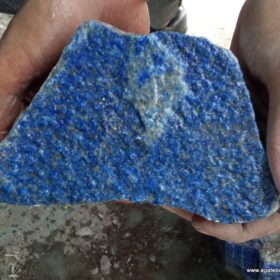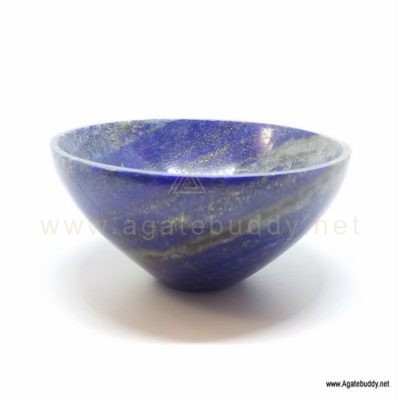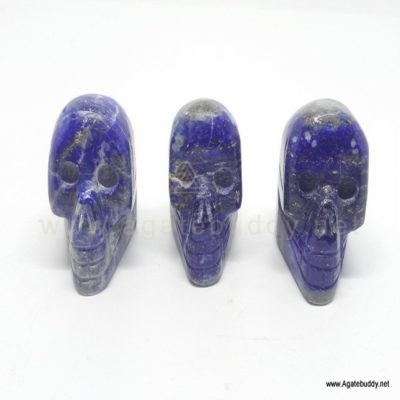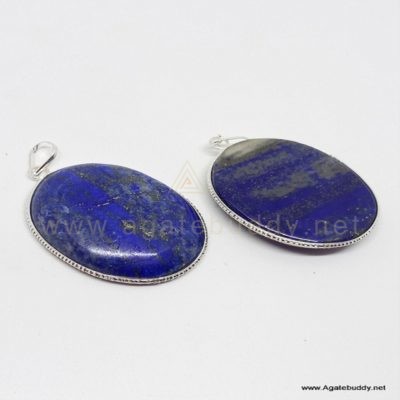Gemstones
Lapis Lazuli Meanings And Uses


Introduction to the Meaning and Uses of Lapis Lazuli
Lapis Lazuli is one of the most sought after stones in use since man’s history began. Its deep, celestial blue remains the symbol of royalty and honor, gods and power, spirit and vision. It is a universal symbol of wisdom and truth.
In ancient times Lapis Lazuli was most highly regarded because of its beautiful color and the valuable ultramarine dye derived from it. Its name comes from the Latin lapis, “stone,” and the Persian lazhuward, “blue.” It is rock formed by multiple minerals, mostly Lazurite, Sodalite, Calcite and Pyrite, and is a rich medium to royal blue with gold flecks (pyrites). Lower-grade Lapis is lighter blue with more white than gold flecks, and is sometimes called denim Lapis.
Lapis Lazuli was among the most highly prized tribute paid to Egypt, obtained from the oldest mines in the world, worked from around 4000 B.C. and still in use today. Referenced in the Old Testament as sapphire (unknown in that part of the ancient world), Lapis Lazuli is most likely the fifth stone in the original breastplate of the High Priest, as well as those of later times.
The golden sarcophagus of King Tutankhamen was richly inlaid with Lapis, as were other burial ornaments of Egyptian kings and queens. It was used extensively in scarabs, pendants and other jewelry, and ground into powder for dyes, eye shadow and medicinal elixirs. In the dry, barren land of the Egyptians, this deep cobalt blue color was a spiritual contrast to their arid desert hues. The gold flecks were like stars in their night-time sky and by meditating on these colors they felt supernatural forces would transform their lives. The garments of priests and royalty were dyed with Lapis to indicate their status as gods themselves.
In ancient Persia and pre-Columbian America, Lapis Lazuli was a symbol of the starry night, and a favorite stone of the Islamic Orient for protection from the evil eye. [Megemont, 110] Lapis was much used in Greek and Roman times as an ornamental stone, and in medieval Europe, Lapis Lazuli, resembling the blue of the heavens, was believed to counteract the wiles of the spirits of darkness and procure the aid and favor of the spirits of light and wisdom. Ground and processed into powder, it produced the intense, but expensive, ultramarine color favored by the painter, Michelangelo. Buddhists recommended Lapis as a stone to bring inner peace and freedom from negative thought, and during the Renaissance, Catherine the Great adorned an entire room in her palace with Lapis Lazuli walls, fireplaces, doors and mirror frames.
Lapis Lazuli Uses and Purposes – Overview
Lapis is an excellent stone for executives, journalists, and psychologists, stimulating wisdom and good judgment in the practical world. It aids intellectual analysis in archeologists and historians, problem solving for lawyers, and creates new ideas for inventors and writers.
Lapis Lazuli is a powerful crystal for activating the higher mind and enhancing intellectual ability. It stimulates the desire for knowledge, truth and understanding, and aids the process of learning. It is excellent for enhancing memory.
A stone of truth, Lapis encourages honesty of the spirit, and in the spoken and written word. Wear it for all forms of deep communication. It is also a stone of friendship and brings harmony in relationships. A Lapis grid brings calm and loving communication for a home with temperamental teenagers, or children with Asperger’s syndrome, autism, or attention-deficit disorder.
For fame in a creative or public performance-related area, wear or carry Lapis Lazuli to auditions. In the workplace, it attracts promotion, success and lasting recognition in your field.
Lapis Lazuli Chakra Healing and Balancing Energy
Lapis Lazuli activates the psychic centers at the Third Eye, and balances the energies of the Throat Chakra.
The Brow Chakra, also called the Third Eye, is the center of our perception and command. It directs our sight and everyday awareness of the world. Our consciousness is located here, and we relate to ourselves through this chakra.
It balances the important and the unimportant, sorting meaning from data and impressions. It commands the energy flow within the body. When the brow chakra is in balance we see clearly and understand what we see. We can interpret visual cues and our perception is high. Our thoughts and internal communications within ourselves are healthy and vibrant. We are open to new ideas, dreams, and visions. We can be quietly observant, and reflective. We can control the flow of energy within all the chakras.Lapis Lazuli
The Throat Chakra is the voice of the body, a pressure valve that allows the energy from the other chakras to be expressed. If it is blocked or out of balance, it can affect the health of the other chakras. In balance, it allows for the expression of what we think and what we feel. We can communicate our ideas, beliefs, and emotions. When the throat chakra is in balance and open, we can bring our personal truth out into the world. We have an easy flow of energy within the body and spirit. The energy that springs upward from the lower chakras can continue its path enabling free expression and natural release. Blue crystal energy will unblock and balance the throat chakra. The darker shades of blue carry the power of truth.




